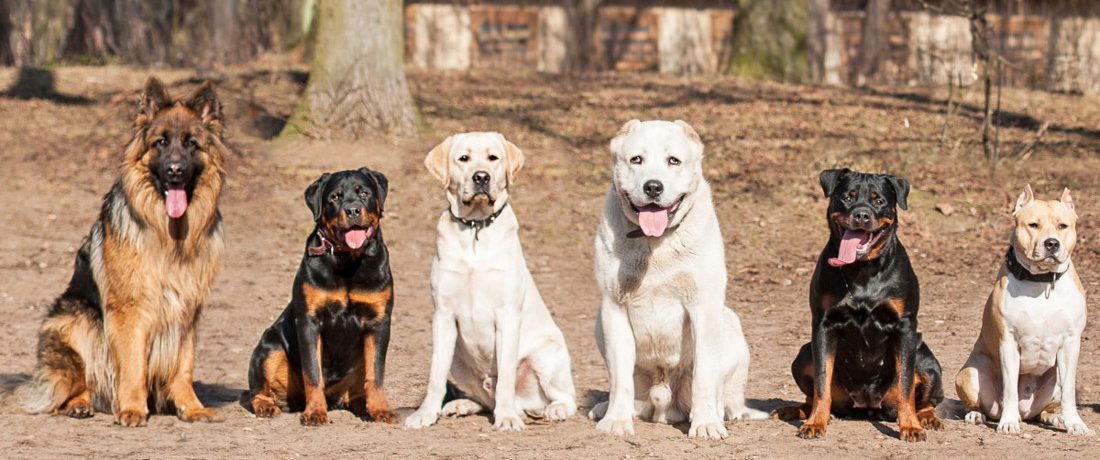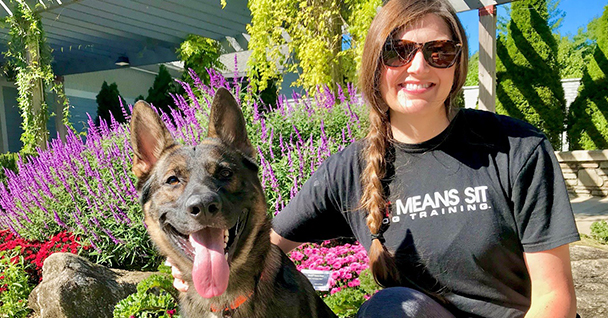Exactly how to Select the Right Technique for Successful Dog Training
Wiki Article
Necessary Tips for Successful Dog Training: An Overview for Animal Owners
Efficient pet dog training is a diverse process that needs a tactical method tailored to both the pet dog's personality and the owner's objectives. Comprehending just how to browse these obstacles can substantially boost the training experience, inevitably transforming the connection between proprietor and pet.Comprehending Canine Habits
Understanding pet dog actions is crucial for efficient training and fostering an unified connection in between dogs and their owners. Dogs interact mainly via body language, vocalizations, and activities, making it critical for owners to interpret these signals precisely. Acknowledging a canine's position, tail position, and ear alignment can supply insights right into its emotion. As an example, a wagging tail does not always suggest happiness; it can also signal exhilaration or stress and anxiety.
Socializing plays a considerable duty in pet dog habits; exposure to different environments, people, and various other pets can dramatically influence a dog's temperament. Additionally, factors such as type features and private temperament should guide training approaches, as some types may have particular behavioral traits that necessitate tailored techniques. By comprehending these elements, proprietors can develop a helpful setting that motivates positive behavior, bring about effective training outcomes and a much deeper bond with their pets.
Developing Constant Commands
Efficient interaction with your canine starts with establishing regular commands. This foundational component of training is critical for cultivating understanding in between you and your pet. Uniformity in the commands you make use of makes certain that your pet dog can accurately connect details words or phrases with the wanted behaviors.When selecting commands, select clear, distinctive words that are easy to state and differentiate from one an additional. Avoid utilizing similar-sounding commands that might confuse your pet dog. As an example, using "sit" and "remain" is proper, but "sit" and "hit" might cause misconceptions.
Furthermore, preserve the very same tone and volume for every command. Dogs are delicate to singing hints, so differing your tone can develop complication.
It is equally crucial to make sure that all family participants are on the exact same web page regarding the commands used. A united front in command usage will certainly prevent mixed signals and reinforce the understanding procedure.
Favorable Reinforcement Methods
The power of positive reinforcement in pet dog training depends on its capability to encourage preferred habits via incentives and praise. This strategy is grounded in the principle that actions followed by positive results are more probable to be duplicated. By integrating favorable reinforcement into your training program, you can effectively form your dog's behavior in a constructive manner.To execute favorable reinforcement, it's necessary to determine what inspires your canine, whether it be treats, toys, or verbal appreciation. When your dog performs a preferred action, such as resting on command, quickly reward them with a treat or love. This organization between the command and the favorable result reinforces their understanding.
It's important to timing the benefits appropriately; supplying the reinforcement within seconds of the wanted actions helps your canine make the link (dog training). Furthermore, consistency is essential-- make certain that all relative make use of the exact same commands and reward systems to stay clear of confusion

Progressively, you can decrease the regularity of deals with as your pet finds out the habits, transitioning to praise or recurring rewards. This approach not just fosters a solid bond in between you and your canine but also advertises a positive discovering atmosphere, making educating a pleasurable experience for both.
Socialization and Interaction
Continually exposing your canine to a variety of settings, people, and various other pets is critical for their social development. Socializing needs to start early, preferably during the essential home window of here are the findings 3 to 14 weeks, when pups are most responsive to new experiences. Nonetheless, older pets can additionally profit from recurring socializing initiatives.Present your canine to different setups, such as parks, pet-friendly stores, and metropolitan areas. This exposure aids them adjust to various stimulations, lowering anxiety and concern actions. Motivate positive interactions with other canines and individuals, guaranteeing that these experiences are risk-free and regulated to cultivate confidence.
Utilize structured playdates with courteous canines, as this can enhance your canine's social abilities and show them appropriate actions. Obedience classes and training sessions additionally give outstanding opportunities for socializing, enabling your dog to interact with others in a supervised setting.
Screen your pet's body movement during communications, as this will help you gauge their convenience degree. Gradually enhance exposure to even more challenging situations while ensuring that each experience is positive. A well-socialized pet is more most likely to exhibit balanced behavior, making them a pleasure to have in any setup.
Resolving Usual Training Obstacles
Every dog proprietor will run into training difficulties at some point, no matter their canine's age or socialization degree. Identifying typical problems such as stubbornness, diversions, and fearfulness can help in developing efficient techniques for renovation.
Progressively present diversions as the canine comes to be a lot more efficient in commands. Short, regular training sessions are additionally reliable in maintaining interest.
Terror can prevent a pet's knowing process. Progressive desensitization to the resource of anxiety, paired with favorable reinforcement, can help alleviate anxiousness. Persistence is vital; never force a dog into a circumstance that creates distress, as this may worsen the problem.
Ultimately, understanding and attending to these typical difficulties with an organized approach will promote a more effective training experience, reinforcing the bond between pet dog and proprietor while advertising efficient understanding.
Verdict
In recap, successful pet training depends on an extensive understanding of canine habits, the facility of constant commands, and the application of positive reinforcement methods. Socializing plays a crucial function in creating well-adjusted family pets, while resolving great post to read usual training obstacles calls for patience and versatility. By applying these crucial strategies, family pet owners can foster a solid bond with their canines and promote preferable behaviors, ultimately causing a harmonious connection in between humans and their canine buddies.Recognizing dog habits is necessary for reliable training and fostering a harmonious relationship in between dogs and their proprietors.Socialization plays a considerable duty in pet behavior; direct exposure to numerous atmospheres, people, and various other animals can significantly affect a pet's personality.The power of positive reinforcement in dog training lies in its capability to encourage preferred behaviors via rewards and praise. By including positive reinforcement right into your training regimen, you can efficiently shape your pet dog's behavior in a positive fashion.
In summary, effective dog training counts on a comprehensive understanding of canine habits, the facility of constant commands, and the application of positive support methods.
Report this wiki page